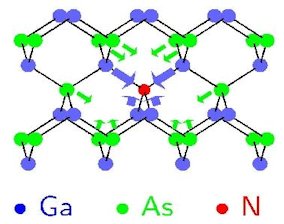Forschungsschwerpunkte - Prof. Dr. Michael Rohlfing
Im Mittelpunkt unserer Arbeiten stehen angeregte elektronische Zustände in kondensierter Materie. Diese Zustände und ihre Spektren spielen eine zentrale Rolle beim Verständnis optischer Eigenschaften, bei der strukturellen Charakterisierung von Materialien, und vielem mehr. Besonders interessieren uns Systeme, die durch quantenmechanische Zustände auf der Längenskala der atomaren Bindung gekennzeichnet sind. Die Eigenschaften derartiger nanoskopisch geprägter Materialien gehen qualitativ weit über den ausgedehnten Festkörper hinaus und lassen sich nicht durch dessen Kenngrößen beschreiben. Sie erfordern vielmehr eine mikroskopische Theorie, die als kleinste Einheit am einzelnen Atom und seinen Orbitalen ansetzt und als ab-initio Theorie, also ohne Vorgabe von Parametern, formuliert wird. Darüber hinaus werden elektronische Zustände und ihre Spektren erheblich von Vielteilchen-Effekten beeinflusst (insbesondere von elektronischer Korrelation), deren sorgfäaltige Behdnalung mittels Vielteilchen-Störungstheorie einen Hauptaspekt dieses Forschungsgebiets darstellt.
Ein essentieller Bestandteil unserer Methoden ist die Symbiose grundlegender physikalischer Konzepte mit numerischen Verfahren, also die Umsetzung der Elektronenstruktur-Theorie in effiziente Computer-Algorithmen. Mittels solcher Software untersuchen wir interessante Aspekte verschiedenster Materialklassen. Die Verfahren lassen sich daher in den Grenzbereich zwischen Vielteilchenphysik, numerischer Computerphysik, und Materialwissenschaft einordnen.





